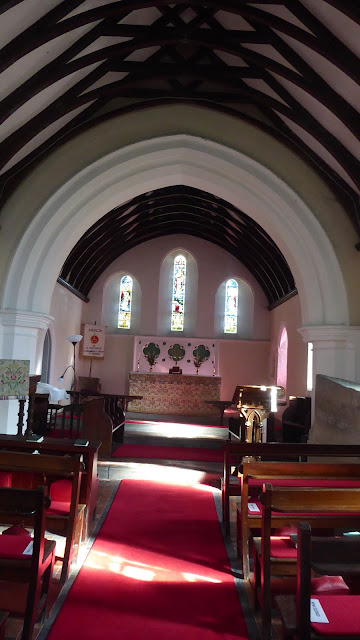Llanlleonfel Church, Garth
In the wider landscape beyond the church a series of earthworks have been recorded. There are linear banks, possible platforms and are suggestive of a long-deserted Medieval settlement. There is an area of ridge and furrow, also suggestive of a former Medieval settlement. To the S-E of the church is a sunken trackway, which show that there was further settlement in the area. To the western end of the churchyard "is a univallate rectangular enclosure, 30m x 55m", which could possibly be "a later prehistoric defended enclosure or part of an early medieval graveyard." (Clwyd Powys Archaeological Trust).
Extract from the Diary of Rev. Francis Kilvert 1840 - 1876:
Wednesday 6th August 1873
This afternoon Mr & Mrs Venables and Mary Bevan and I went by train from Builth Road to Garth to attend the Garth Flower Show, Bazaar and Athletic Sports, all in one. Mrs Welby was holding the bazaar in one of the tents for the benefit of poor old Llanlleonfel Church now in ruins, but which they hope to get restored.
While the athletic sports were going on I wandered away by myself into congenial solitude for a visit to the ruined Church of Llanlleonfel. Passing by the quaint old house of Garth, Formerly one of the numberless possessions of the great Gwynne family, I descended by a cart road into the meadows.
The ruined Church totted lone upon a hill in desolate silence. The old tombstones stood knee deep in the long course grass and white and purple flowers nodded over the graves. The door stood open and I went in. The window frames and seats were gone. Nothing was left but the high painted deal pulpit bearing the sacred monogram in yellow letters. Some old memorial tablets bearing Latin inscriptions in remembrance of Marmaduke Gwynne and his family were affixed to the East wall. The place was utterly deserted, there was not a sound. But through the ruined windows I could see the white tents of the flower show in the valley beneath. I ascended the tall rickety pulpit and several white owls disturbed from their day sleep floated silently under the Rood Loft on their broad downy wings and sauntered sailing without sound through the frameless east and west windows to take refuge with a graceful sweep of their broad white pinions in the ancient yew that kept watch over the Church. It was a place for owls to dwell in and for satyrs to dance in.
We had tea as guests of Mrs Maitland in the old Garth House which with its partly castellated out-walls reminded me of an ancient German Schloes.
The Gwynn memorials, all in Latin to show their status. Here is Marmaduke, who presented the bell. Marmaduke seems to be a popular name with the gentry at this time, as the Lloyds also used it.
This shows the actual Latin inscription and includes the letters which have been obscured. I have spared you the detailed etimology which follows. Now you know where the title of this new blog came from!
I was very drawn to the mound in the centre of the graveyard, where lie, one assumes, Ioruert and Ruallaun, who were, incidentally, a Brecknockshire king and his son, supposedly killed in battle and buried here. A yew tree was planted on top, though cut down at one stage has put out regrowth as they are wont to do. In 1699 antiquarian Eduard Lluyd records two stones standing some 8 feet apart, one of which we may assume was the dedication stone now inside the church. Two large boulders are still in the churchyard, elsewhere (I missed them as I didn't know they were there until I read further) but their secondary deposition isn't helpful as they were doubtless moved when the church was rebuilt in 1876.




















I did not realize that you had other blogs!
ReplyDelete